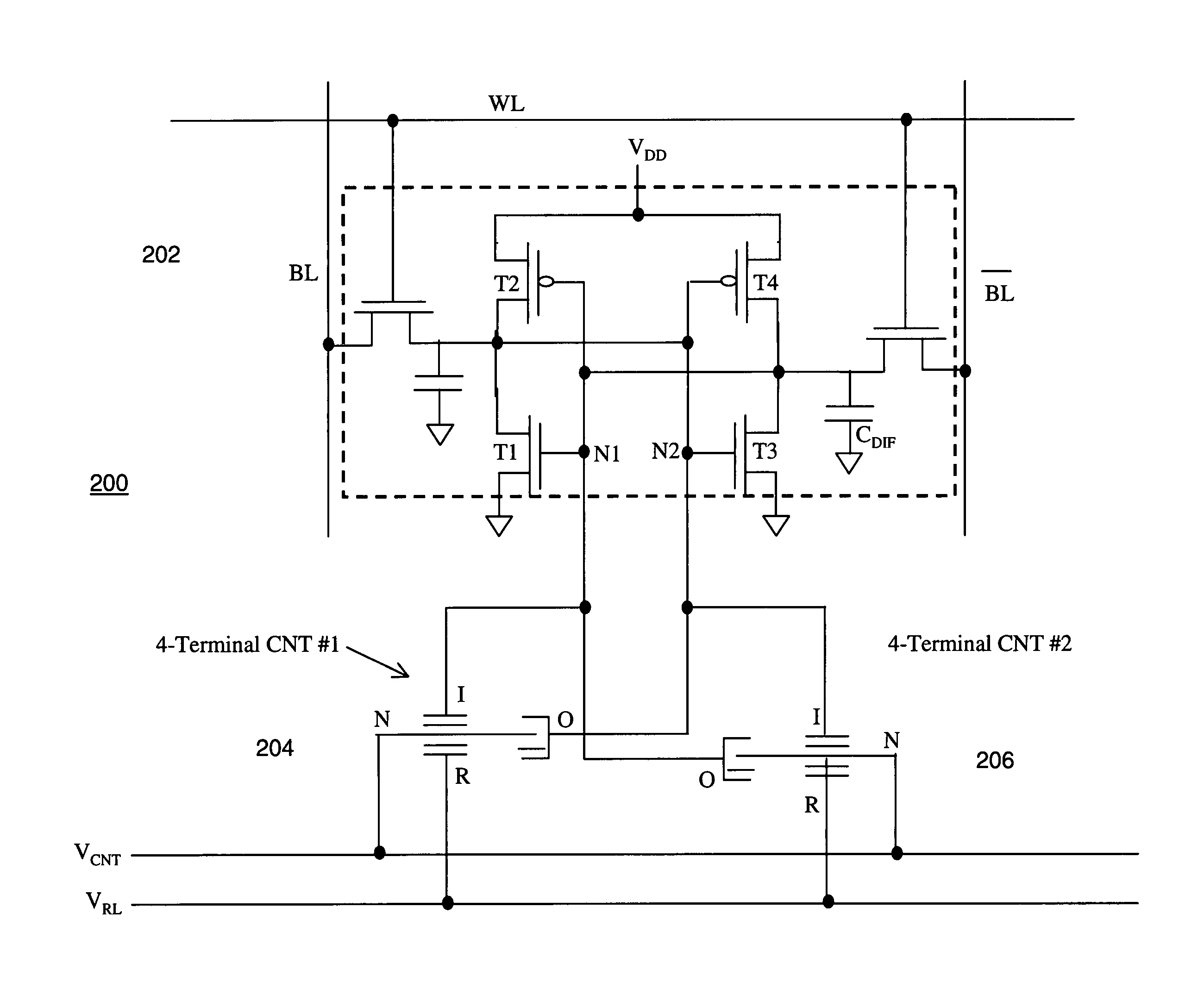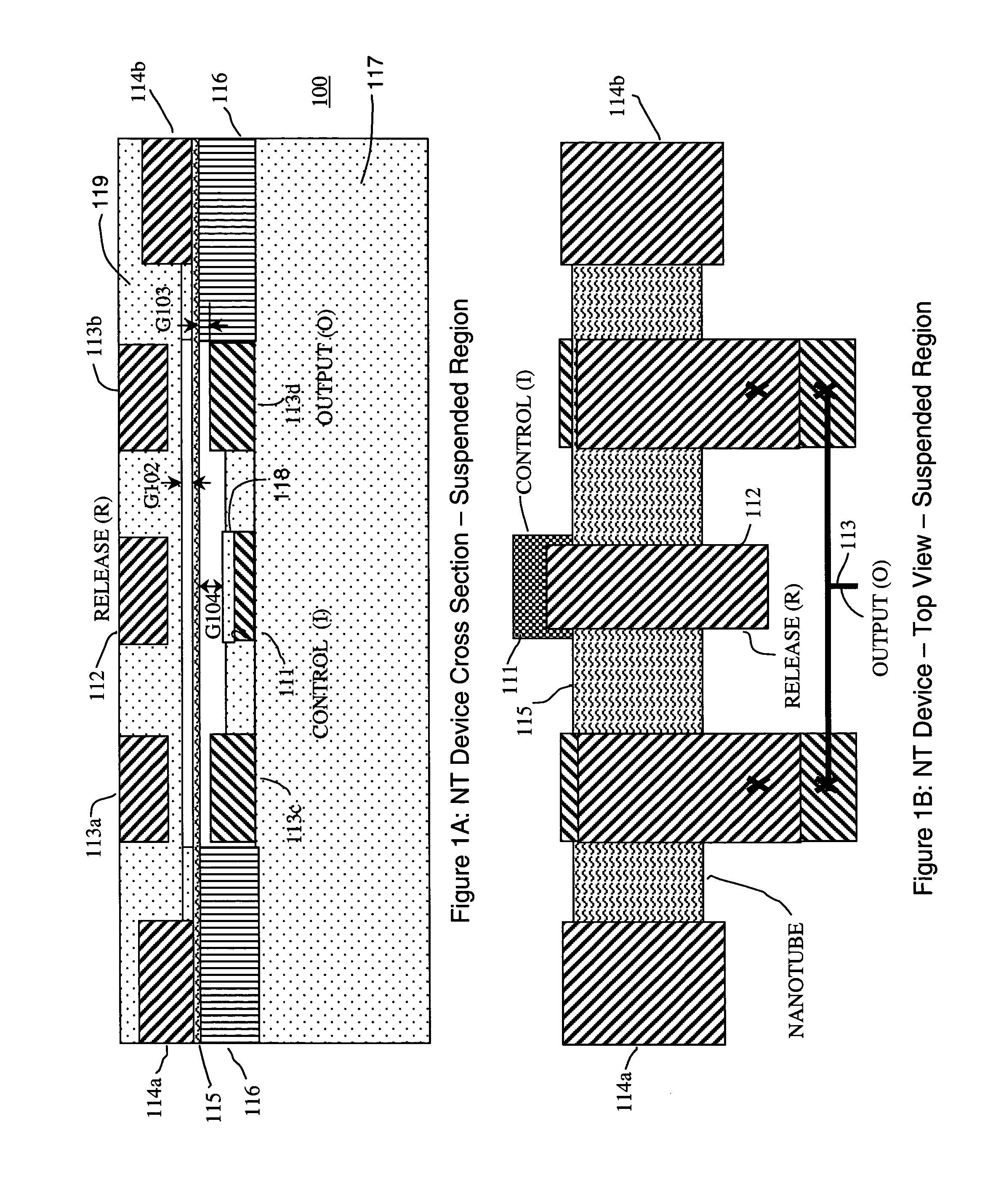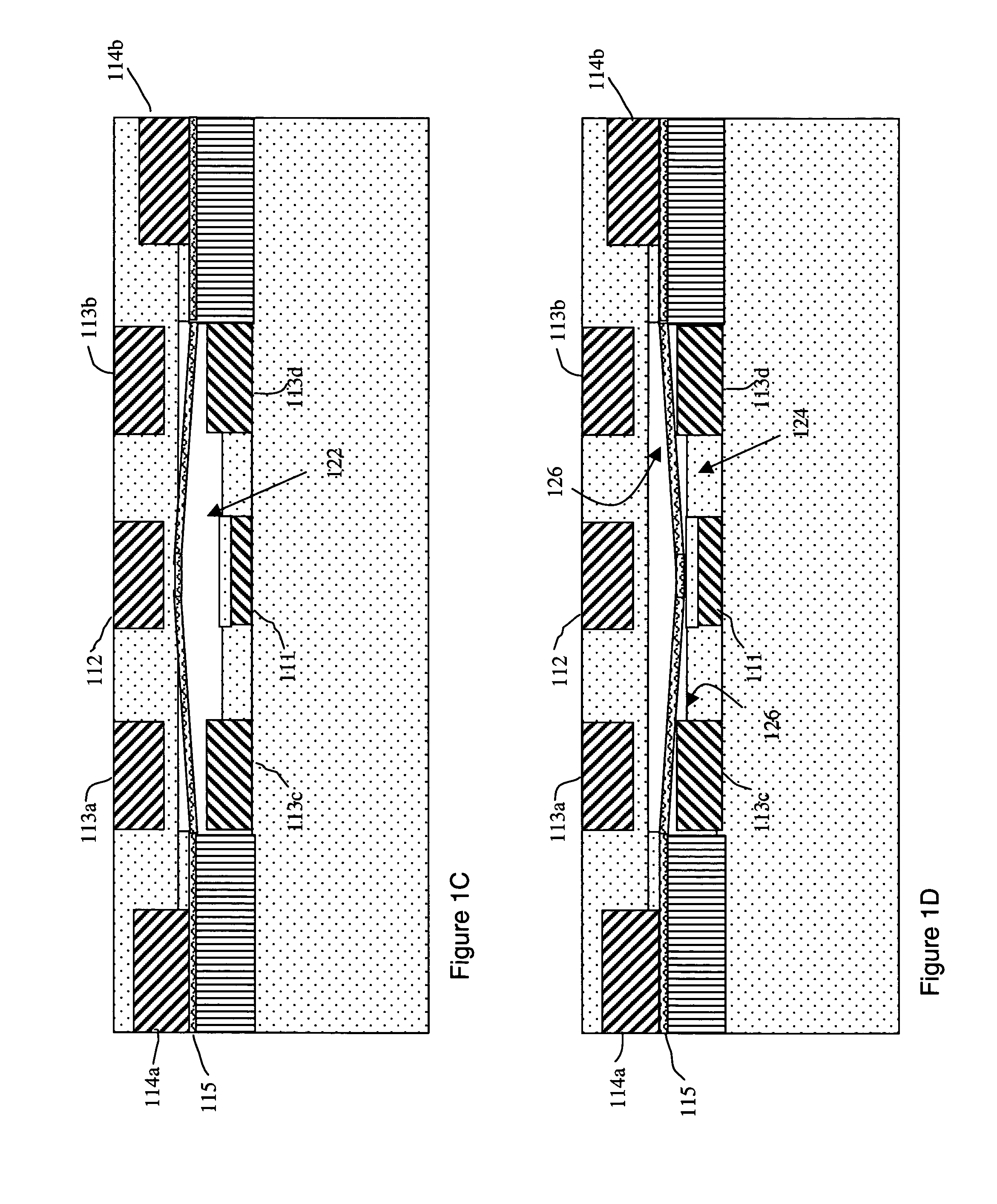Random access memory including nanotube switching elements
a technology of random access memory and switching elements, which is applied in the field of nanotube switching circuits, can solve the problems of high power consumption, density and operation speed of mos digital circuits, and limited density of bipolar digital integrated circuits
- Summary
- Abstract
- Description
- Claims
- Application Information
AI Technical Summary
Benefits of technology
Problems solved by technology
Method used
Image
Examples
Embodiment Construction
[0027]Preferred embodiments of the invention provide switching elements in which a nanotube-based switching element is included with an otherwise conventional RAM cell. The nanotube switching element may then be used to provide non-volatile storage functionality, for example, to act as a shadow ram. Moreover, the design of preferred embodiments of the nanotube switching elements may be included as extra layers on top of already formed RAM cells.
[0028]First, the nanotube switching element will be described. Second, the integration of such an element with a RAM cell will be explained.
Nanotube Switching Element
[0029]FIG. 1A is a cross sectional view of a preferred nanotube switching element 100. Nanotube switching element includes a lower portion having an insulating layer 117, control electrode 111, output electrodes 113c,d. Nanotube switching element further includes an upper portion having release electrode 112, opposing output electrodes 113a,b, and signal electrodes 114a,b. A nano...
PUM
 Login to View More
Login to View More Abstract
Description
Claims
Application Information
 Login to View More
Login to View More - R&D
- Intellectual Property
- Life Sciences
- Materials
- Tech Scout
- Unparalleled Data Quality
- Higher Quality Content
- 60% Fewer Hallucinations
Browse by: Latest US Patents, China's latest patents, Technical Efficacy Thesaurus, Application Domain, Technology Topic, Popular Technical Reports.
© 2025 PatSnap. All rights reserved.Legal|Privacy policy|Modern Slavery Act Transparency Statement|Sitemap|About US| Contact US: help@patsnap.com



